Anaerobic Digestion to Bio-Methane
1. Introduction
Anaerobic digestion is a series of processes in which microorganisms break down biodegradable material in the absence of oxygen. In principal, by putting the organic material in a box, so as to deprive it of oxygen, and keeping the temperature at a fixed number, to be discussed later, these microorganisms, which are in the organic wastes will become active and result in bio-gas and both liquid and solid residues.
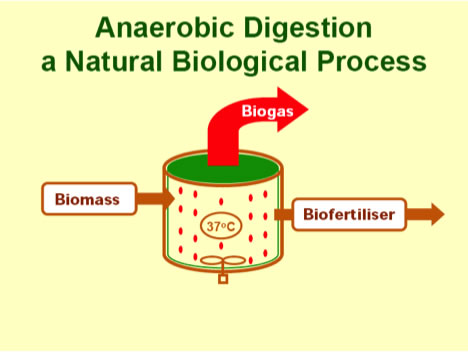
A real system can be represented in schematic form with just a few simple additions.

Our interest in this section is to point to the value of anaerobic digestion as a coprocess to make other fuels less carbon intensive. We will thus briefly define the process, expose the reader to some of its essentials, and then move on to seeing where it can fit into the ethanol/methanol fuel picture. For the reader interested in the process itself, we suggest starting with the wiki page Anaerobic Digestion http://en.wikipedia.org/wiki/Anaerobic_digestion. It will lead you to many additional references.
The page is only a skeleton outline so far.
1.1. The key outputs
The anaerobic digestion result in two important products and a few others that are usually considered contaminants.
1.1.1. bio-gas
Bio-gas contains both methane and CO2. The proportions depend on the feed stocks and the processing. For example landfill bio-gas is usually 60% methane and 40% CO2.
1.1.2. Fertilizer
The solid and liquid remains after anaerobic digestion can both be use on the soil and for fertilizer.
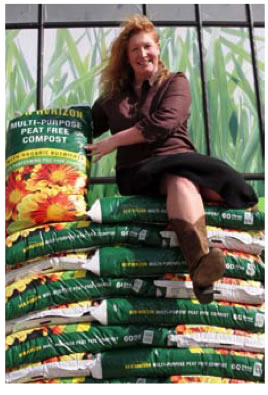
1.2. Countries leading development
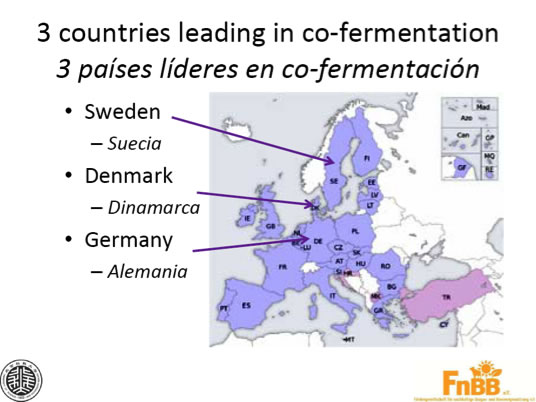
2. Landfill Gas - Anaerobic Digestion of general organic wastes
There are 2700 landfills in the US alone. Only a small percentage of these are mined for the bio-methane they produce. The picture below shows a sketch of the components needed, and the two picture below that show actual installations.
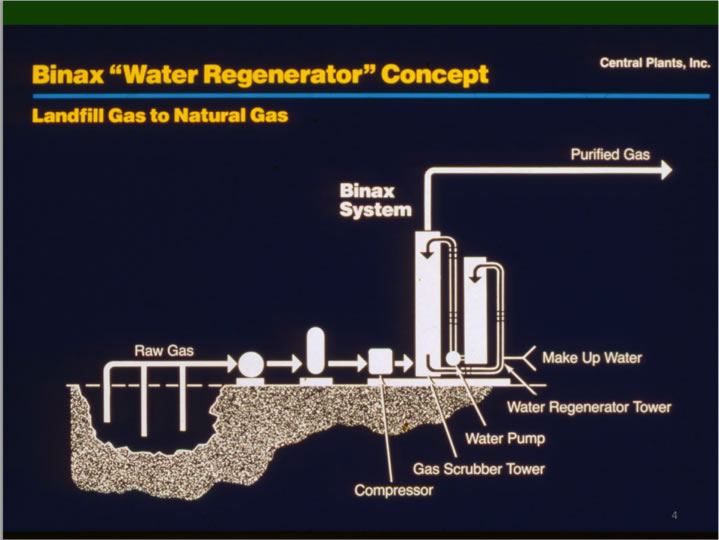
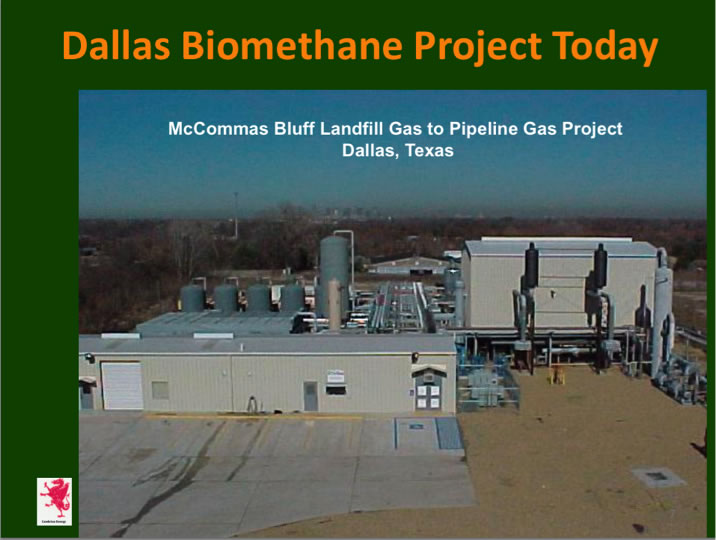
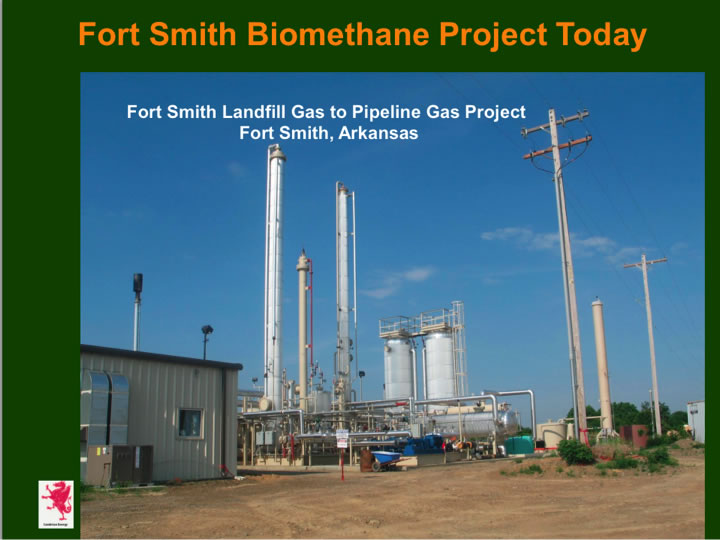
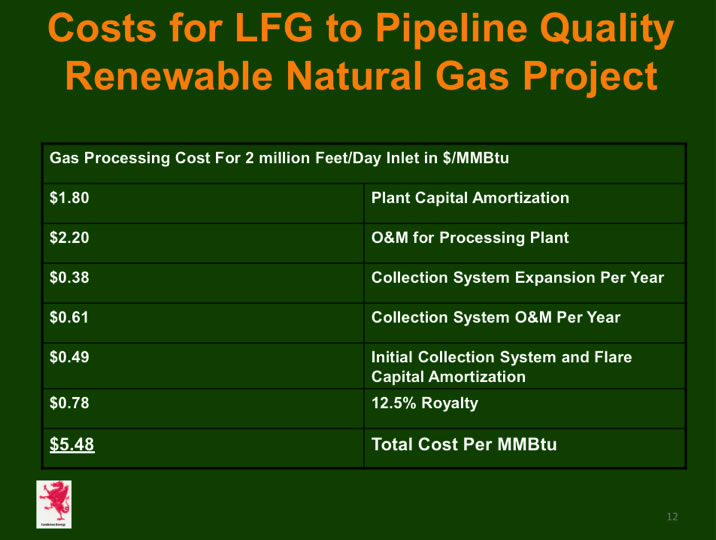
3. Anaerobic Digestion of animal wastes
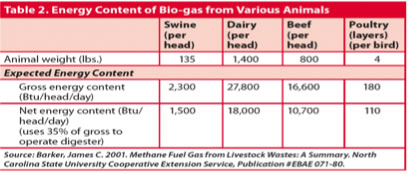
For example, the energy potential from just dairy cows in the State of New Mexico is 324,000 dairy cows x 27,800 BTU/cow/day = 9,007,200,000 BTU/day. For comparison, the US Navy uses 548,000,000,000 BTU/day. Thus New Mexico cows can supply the Navy with 1.6% of its daily needs.
4. Anaerobic digestion of food wastes
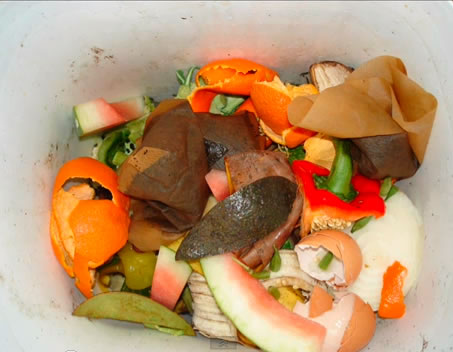 Every American creates 4 1/2 lbs of wastes
per day. In 2008, the average amount of waste generated by each person in America per day was 4.5 pounds. 1.1 pounds of that was recycled, and .4 pounds, including yard waste, was sent to composting. In total, 24.3% of waste was recycled, 8.9% was composted, and 66.8% was sent to a landfill or incinerated.
Every American creates 4 1/2 lbs of wastes
per day. In 2008, the average amount of waste generated by each person in America per day was 4.5 pounds. 1.1 pounds of that was recycled, and .4 pounds, including yard waste, was sent to composting. In total, 24.3% of waste was recycled, 8.9% was composted, and 66.8% was sent to a landfill or incinerated.
Top
5. Integrating feedstocks to increase yields
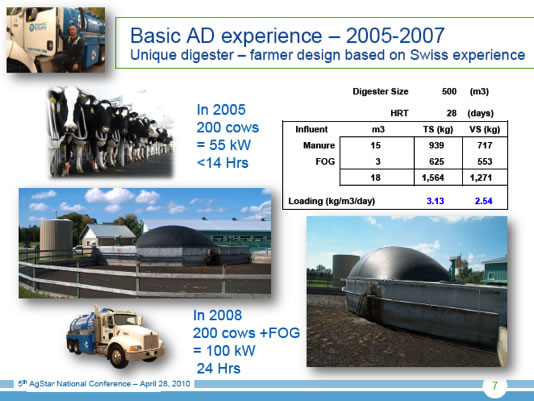
.

